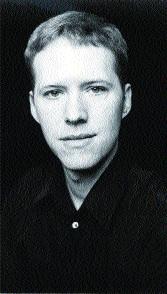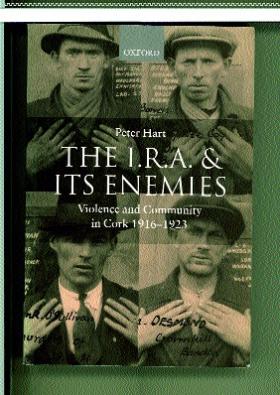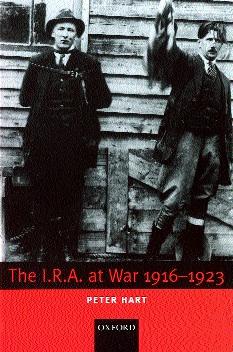Hart to Heart
Published in Features, Issue 2 (Mar/Apr 2005), Volume 13
(Sheilagh O’Leary)
BH: Tell us a little about your background.
PH: I’m a Newfoundlander, which no doubt gave me some insight into sectarianism and nationalism, thanks to denominational education and our status as a former country and generally pissed-off part of Canada. Newfoundlanders have a strong sense of identity, and there are Newfoundland clubs, bars and newspapers across Canada and beyond. After (General) Booth Memorial High School, I was educated at Queen’s in Ontario, Yale in the United States, and Trinity College in Ireland. I used to work at Queen’s in Belfast—a terrific place to work on Irish history—but now I’m lucky enough to be able to work at home, at Memorial University of Newfoundland, where I hold the Canada Research Chair in Irish Studies
BH: To what do you owe your interest in Irish history?
PH: I did as much political science as history before choosing my doctoral subject (my MA is in international relations) so this was a rather late interest. For a long time I was focused on Asian history—I almost went to the University of Hawaii or to Beijing. But my underlying interests were revolution, military history and associated subjects, and they ultimately took me into Irish history instead, which, apart from anything else, meant not having to learn Chinese.
BH: Who were your main influences among historians?
PH: Reading David Fitzpatrick, Tom Garvin, Theodore Hoppen and Charles Townshend in the 1980s got me very excited about Irish politics as a subject. They were undoubtedly formative influences. Having David as a supervisor was enormously beneficial. I should also add Joseph Lee’s little book, The modernisation of Irish society—what a terrific piece of writing. Lucien Karchmar of Queen’s in Kingston was an extraordinary polymath and expert on revolutionary warfare, who first got me interested in the subject. Sadly, he died recently, so his great book on the subject was never completed. Moving away from history proper, Jim Scott at Yale introduced me to the comparative and intimate study of revolutions and social movements.
BH: Why were you drawn to the IRA, and why the IRA in Cork in particular?
PH: The IRA and the Irish revolution was what I was interested in to begin with really—a broader interest in Irish history followed after. It turned out to be a good choice: little studied (when I started) but with a vast amount of material to work with. And there were still a fair number of veterans about whom I could interview. My starting-point for the thesis was to do a nationwide statistical study of the IRA and violence from 1917 through to 1923. I did this (the results can be found in The IRA at war [2002]) but I soon added a county study by way of contrast, and that’s where Cork came in. Cork I chose because it was big and contained several different regions, including a city. It was also obviously a very active place during the revolution so there was a lot to write about. I was lucky to meet a couple—the O’Driscolls—who let me stay in their house there when I was doing research. This made a big difference for me, a poor graduate student. And when I went down to look around I really liked and enjoyed both city and county. West Cork was also the site of my second big research project, on Protestants from 1911 to 1926, which has yet to be written up.
 BH: Were you surprised by the volume of reaction, both positive and negative, to The IRA and its enemies?
BH: Were you surprised by the volume of reaction, both positive and negative, to The IRA and its enemies?
PH: The IRA and its enemies [1998] was my first book, so I didn’t really know what to expect. The fact that so many people did read it and buy it amazed me, but Irish people are really interested in their own history—one of the things that makes being a historian of Ireland so interesting. In terms of criticism, I was most afraid of local people feeling I hadn’t got the place right—that I’d put a town or a townland in the wrong place, that kind of thing. No one has ever pointed out such a mistake so I’ve always been very pleased by that. As for reviews, there were some positive ones I didn’t like and some mixed ones that I thought made good points. It’s always useful if the reviewer engages with the whole book, but this wasn’t (and isn’t) always the case. Many reviewers, even academics, only read bits of it, which is really annoying. Once it got some media attention, people often only paid attention to the chapter on the Kilmichael ambush, as if the whole thing was some meditation on Tom Barry. He’s really a very minor character. The Kilmichael chapter is only six per cent of my book, but it was all people wanted to talk about in radio and press interviews. Often other points I made about other issues—including positive comments on the character of most IRA men—were simply cut. I made this remark that there were serial killers on both sides; not necessarily psychopaths, but individuals and small groups who did the dirty work—like the Dublin ‘squad’. It’s a common pattern in all kinds of wars, I think. I made the point that Tom Barry was one of these hard men and, of course, the rest of the argument was dropped to leave the headline ‘Tom Barry was a serial killer’! That kind of thing is a good lesson, although I still try to say whatever I think.
BH: You took part in quite a public debate with some of your critics at the time. How do you respond to those criticisms now?
PH: Real debate is fun: what’s the point of writing if everyone agrees or ignores you? And there was some good discussion in newspaper columns and on TV and radio. However, a lot of the criticism was and is clearly politically driven and assumes that I am too, which simply isn’t true. I always found the fight over ‘revisionism’—it was never a real debate—boring and incoherent. I’ve never supported any unionist or nationalist group and I don’t have any religious affiliation. Apart from all that, I have yet to see any convincing refutation of anything I’ve written. Most critics have never even been in the archives and haven’t got a clue what’s there or how the IRA really worked. Honestly—when you are reduced to claiming that documents are forgeries because you can’t deal with the contents, you’re like Mary MacSwiney claiming that British agents must have killed those Protestants in 1922 because the IRA couldn’t possibly have. If Tom Barry or anybody else takes it upon himself to kill other people then they’d better expect to have their behaviour scrutinised. The idea that that is somehow inappropriate is amazing to me.
BH: The obvious response is what about when government forces kill people?
PH: I make no distinction in my book between state and insurgent violence or between killers in and out of uniform. There were death squads on all sides and my book is full of examples of that. The first chapter of The IRA and its enemies is the real introduction to the book, not the Kilmichael chapter, and there I show a cycle of IRA and police violence, followed by IRA reprisals on suspected informers. My chapter on the Hales family had a lot of detail on how republicans suffered. It’s true that I spend more time on the IRA than on British forces, but then the book is about the IRA. In world historical terms the Irish revolution was not actually that bloody, but what is odd is that the IRA was the single most violent organisation involved—probably responsible for the majority of deaths on its own. That’s very similar to what happened in Northern Ireland in the recent troubles. This is very unusual indeed, as governments elsewhere are almost always way more violent than rebels. I do think highly of those Republicans who tried to put their ideals above tactics, who tried to avoid or refused to be drawn into sectarian violence or certain types of violence that they found morally wrong: people like Tomás MacCurtain, Terence MacSwiney, and then Seán Moylan and Liam Lynch, who tried to stop the Civil War. I respect people who took the moral aspects of the choices they took seriously, and one of the important aspects of the IRA I try to deal with is how many volunteers actually did make a choice and refused to become ambushers and assassins.
BH: Meda Ryan and Brian Murphy have raised quite specific criticisms. How do you respond to those?
![Tom Barry—‘I included the Kilmichael chapter [in The IRA and its enemies] to illustrate . . . how similar the IRA and government forces really became once the struggle got going . . . It wasn’t to prove that Tom Barry was a bastard.’](/wp-content/uploads/2013/02/Hart-to-Heart-3.jpg)
Tom Barry—‘I included the Kilmichael chapter [in The IRA and its enemies] to illustrate . . . how similar the IRA and government forces really became once the struggle got going . . . It wasn’t to prove that Tom Barry was a bastard.’
BH: Would the evidence in the Bureau of Military History Papers not seem to point towards a much greater role for ex-British servicemen in the IRA rather than as simply targets for its violence?
PH: A noticeable percentage of those killed by the IRA as spies or collaborators were ex-soldiers. On the other hand, I would say that only a tiny minority of veterans ever joined the IRA. In Cork they were only a handful of men, and some of these were forced to join. It obviously needs further research, but in my view they were not numerically or militarily significant. Of course, there is the greater question of class and marginalisation, of tramps, corner boys and drunks, all the factors that made ex-soldiers objects of IRA suspicion.
BH: So who did inform?
PH: Anybody. Priests and clergymen, farmers big and small, people angry at the IRA for a variety of reasons, petty criminals, classic touts who did it for money, IRA men’s relatives, and of course IRA men themselves—a broad spectrum. Informer studies would be a fascinating area of research.
BH: Are you convinced that the idea of ethnic conflict is applicable to the violence in both Belfast and Cork during the revolutionary period?
PH: Yes indeed, and throughout Ireland. I think it’s blindingly obvious that violence had an ethnic basis. The Irish political system before partition was based on ethnic solidarity and division, so how could popular violence derived from rival Unionist and Nationalist mobilisations not be? Violence was both mobilising and polarising and had vast unintended consequences. When it came down to it, people were often targeted and attacked on the basis that they were outsiders or not of the community. But it’s important to stress that I don’t argue that this was ethnic cleansing. There was no ethnic cleansing in the Irish revolution (although the attacks on Catholics in Belfast came close) but there was ethnically targeted violence.
Not that this was the only thing going on, mind you: I’ve discussed this in my last book, The IRA at war. It was worse by far in the North, because Catholics were a large and active minority with support from the South, and Unionist organisations embraced or acquiesced in sectarianism in a way Nationalist ones—to their credit—did not. But that doesn’t mean there were categorical differences in the way they worked. One key difference between North and South was that in the South it was not the Free State or the Catholic Church that was responsible for anti-Protestant violence—they were largely blame-free, and in European terms their record was very good. In the North, however, Unionist politicians had direct links to death squads, and people like Edward Carson encouraged the riots in the shipyards. Incidentally, I think one of the big untold stories of this period is how Protestant churches behaved in the North—it’s not a pretty picture. But pretending that the South and North were different countries in this regard is to commit the foolish partitionist fallacy. It just seems silly to ignore ethnicity as a central factor in modern Irish history and as a key concept in its analysis.
BH: What about issues such as class or agrarian conflict as factors in the violence?
PH: A lot of agrarian and class violence did occur in 1916–23, but it had little to do as such with any phase of the revolution, except perhaps the rise of Sinn Féin in the midlands and west in 1917–18 and its resilience there in 1922 and 1923. Both Unionist and Nationalist movements were cross-class, and most labour unions subordinated themselves to one side or another. Of course class is important, it’s a factor in everything, but I don’t think class struggle as such was a major factor in the Irish revolution.
 BH: I detected a shift in tone in relation to Republican revolutionaries in The IRA at war; is this impression correct? You mention, for example, that the officially non-sectarian rhetoric of Republicanism did act as a brake on sectarian conflict.
BH: I detected a shift in tone in relation to Republican revolutionaries in The IRA at war; is this impression correct? You mention, for example, that the officially non-sectarian rhetoric of Republicanism did act as a brake on sectarian conflict.
PH: In The IRA at war I deal with the whole of Ireland and Britain, as well as the whole of the revolution, so there is a much more structural and comparative view of things. I don’t think I’ve actually changed my mind in any serious way. Not that I’d be a good judge of my own work, mind you! In The IRA and its enemies I go to great lengths to conclude that the guerrillas were pretty much what they said they were: patriotic, ordinary, respectable men. I point out that they fought more cleanly than the National Army in the Civil War. I never use words like ‘terrorist’ to describe them, and I use ‘murder’ just as much with policemen or soldiers as with the IRA. I argue that the two sides became very much like each other—dirty—as the struggle escalated, but I do have extensive statistics to prove my case.
BH: Would you agree that the Northern Ireland troubles affected how contemporary historians dealt with the issue of revolutionary violence in Irish history?
PH: Yes, I’m sure, but largely for Irish and British historians, though. I was fortunate in this sense that my first book didn’t appear until 1998, so the debates that followed weren’t nearly so coloured by ongoing violence. I was in Belfast a lot in the 1990s, and lived there from 1997 on, and it was wonderful to live through the changes there. However, in the 1970s and ’80s, it obviously made talking rationally about violence, its practitioners and its victims much more difficult.
BH: Why have you chosen to work on Michael Collins?
PH: Ah, the white whale! I’ve always been interested in Collins. Some of my earliest articles dealt with him. As I was researching the IRA and the revolution, I collected hidden bits and pieces along the way, so I had a lot of new material to start with. There are literally thousands of previously unknown letters out there, so I’m doing a collection of these as well. I spend a lot of time looking at his life before the 1916 Rising, when he cut a very different figure indeed, so the big question for me is his extraordinary rise to power. He reminds me of Lyndon Johnson or Alex Ferguson—at least as described in biographies. He would have been a great guy to have a beer with or be friends with, but he left a lot of former friends in his wake. He was a good boss and a rotten cabinet colleague (I have every sympathy for de Valera, Stack and co.). He seems to have been genuinely without religious or racial prejudice, a very rare thing at the time. I have read thousands of his letters and there is no expression of sectarianism in any of them. He seems to have been a genuinely open-minded and curious person, interested in everything. An extremely modern person, convinced that science and technology would wipe out poverty and inefficiency in the future, and very optimistic. But he was also a very political animal, very interested in acquiring power. A wider question is how the Irish revolution was such a tremendous opportunity for people like Collins, who because of class or ethnicity would otherwise have been denied that opportunity, to make history. During the revolution there is this absolutely profound feeling that anything was possible, a real genuine spirit, similar to that described by John Reed in Ten days that shook the world. People like Liam Lynch, Ernie O’Malley and others express that spirit, but Collins was the ultimate, he went right to the top.
Brian Hanley lectures in history at NUI, Maynooth.
















